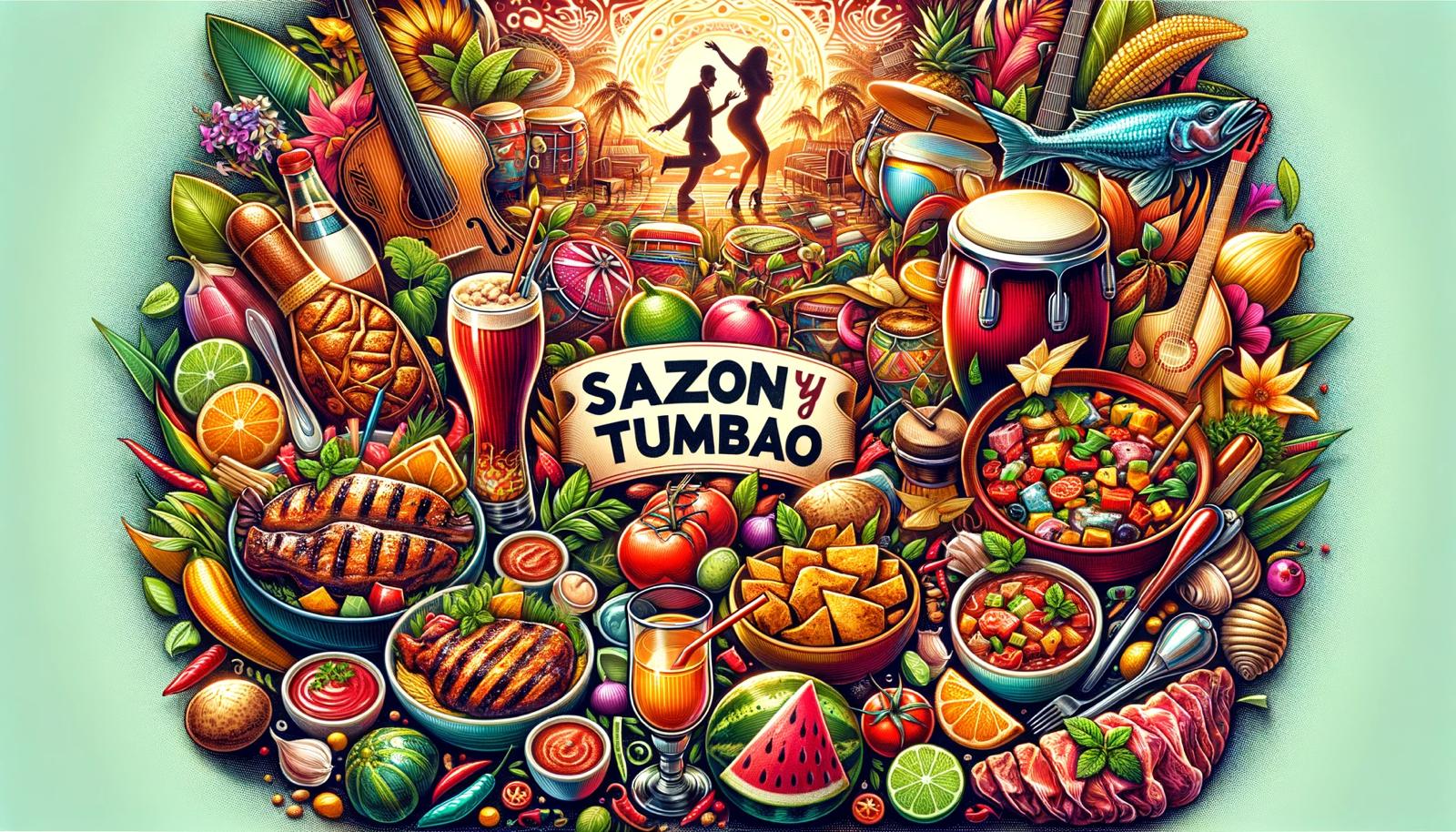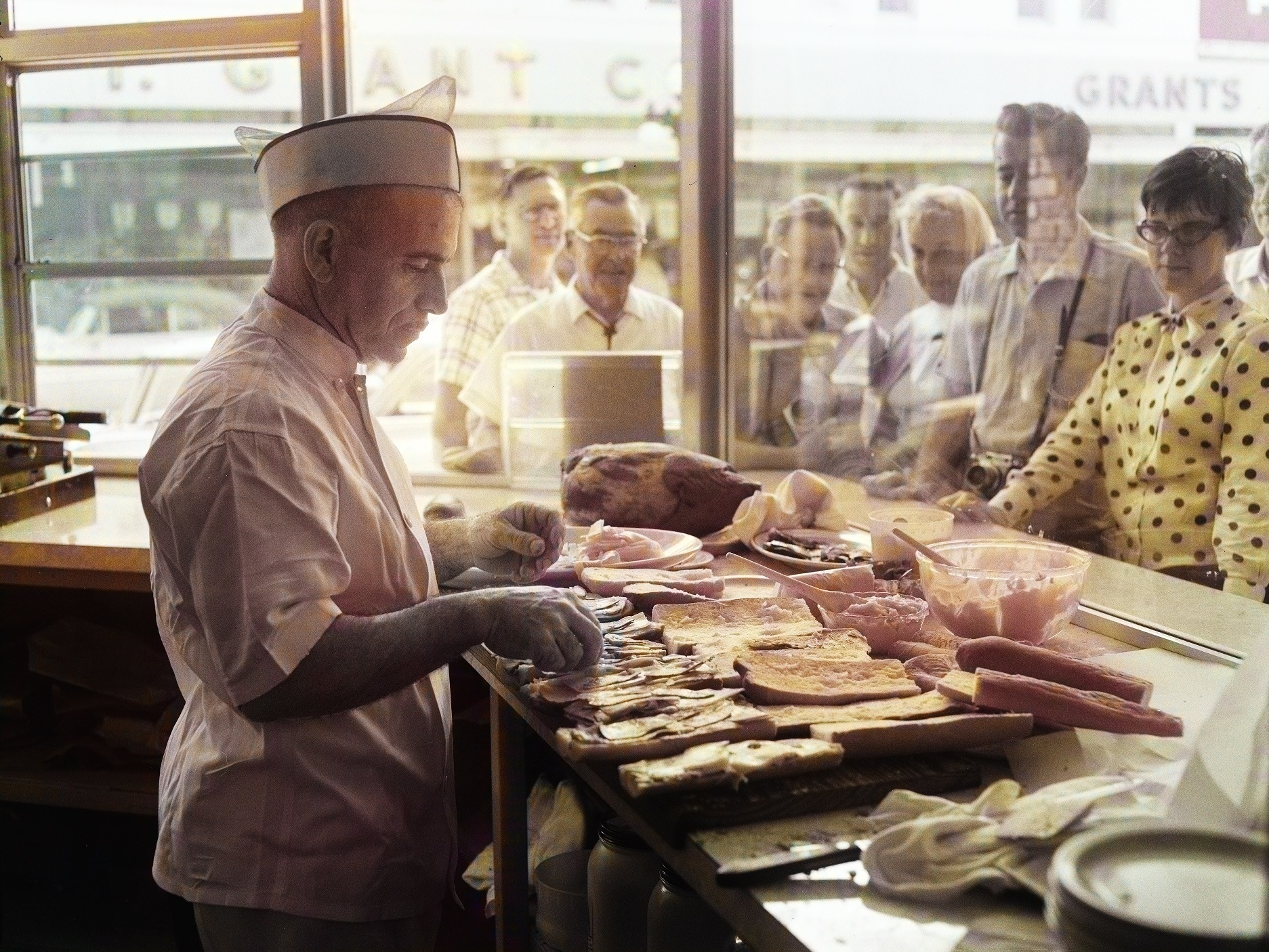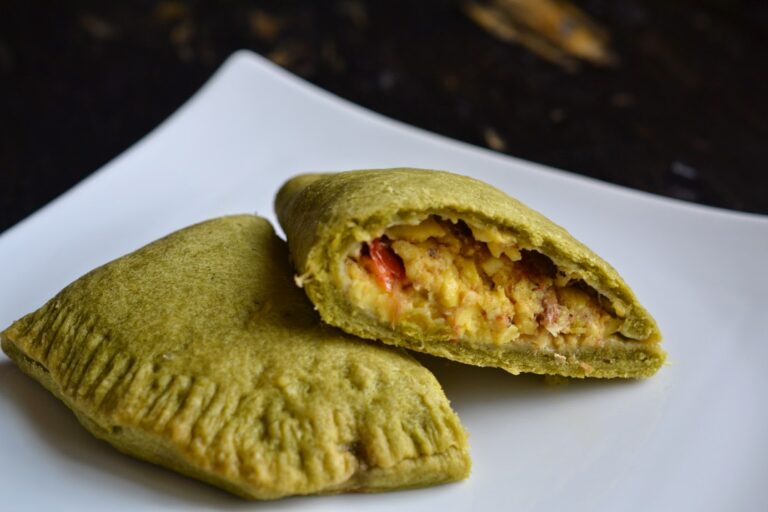Ever bitten into a Cuban sandwich and wondered, “Where did this magical stack of flavors come from?” Let’s unwrap the savory story of the Cuban sandwich, a masterpiece that traveled from the hands of Cuban immigrants all the way to our taste buds.
Packed with mojo-marinated pork, sweet ham, and tangy pickles, this sandwich isn’t just food; it’s a piece of cultural history. So, whether you’re a foodie or just a curious cat, stick around as we slice into the delicious origins of the Cubano. Ready to drool? Let’s dig in!
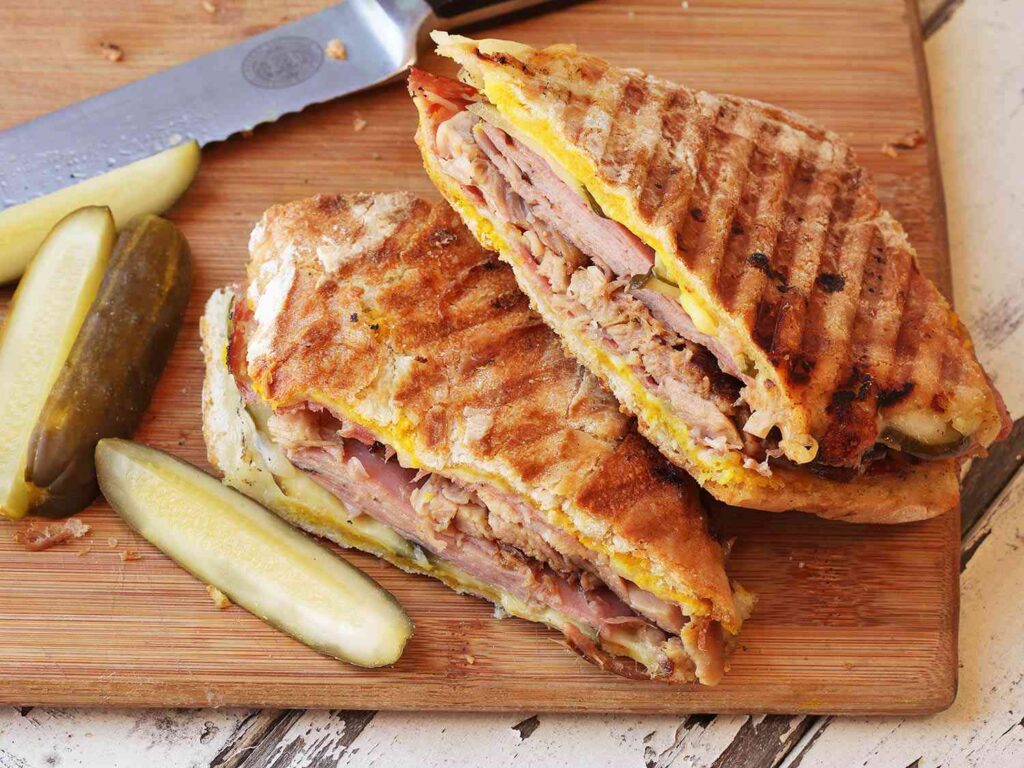
History & Origin of the Cuban sandwich
The Cuban sandwich, or “Cubano,” is a quintessential example of American immigrant culinary fusion. Its history and origin are as flavorful as the sandwich itself. Here’s how it all came together:
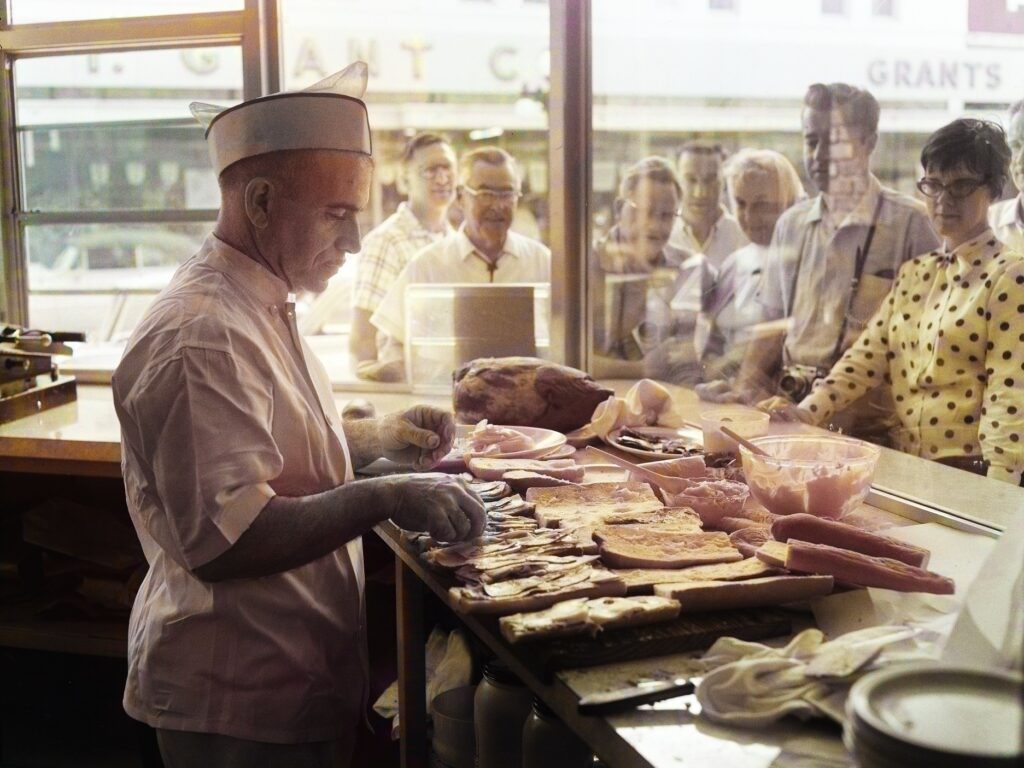
Early Origins
The roots of the Cuban sandwich stretch back to Cuba in the late 1800s, where similar sandwiches were likely consumed by the working class. However, the Cuban sandwich, as we know it today, started to take shape with the influx of Cuban immigrants to Florida, particularly to cities like Tampa and Key West, in the late 19th and early 20th centuries.
Tampa’s Twist
In Tampa, the Cuban sandwich began as a common lunch food for cigar factory workers in the historic neighborhood of Ybor City. This version included not only the traditional ingredients of ham, roasted pork, Swiss cheese, pickles, and mustard but also salami — reflecting the influence of Italian immigrants in the area. Tampa claims to be the birthplace of the “true” Cuban sandwich and even designated it the “signature sandwich of the city of Tampa” in 2012.
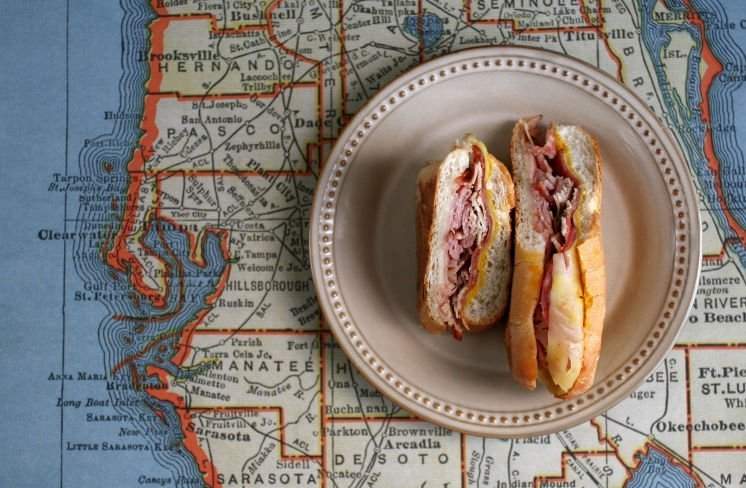
Miami’s Style
As the Cuban population grew in Miami, the sandwich became a staple there as well. Miami’s version sticks more closely to the simpler, original format, usually omitting salami and focusing on the quality of the bread and the balance of the traditional fillings. The rivalry between Tampa and Miami over the “authentic” version of the Cuban sandwich is friendly but fierce, with both cities taking great pride in their interpretations.
Cultural Significance
The Cuban sandwich not only reflects the story of Cuban immigration and adaptation but also represents the broader story of Florida’s cultural and culinary diversity. Over time, it has become an iconic symbol of Florida’s cuisine, enjoyed by locals and tourists alike.
Global Spread
Today, the popularity of the Cuban sandwich has spread far beyond Florida, finding a place in cafes and menus across the United States and internationally, often with additional local twists. Its appeal lies in its delicious simplicity and the perfect marriage of its components.
Where did Cuban bread originate?
Cuban bread, that deliciously soft yet crusty staple that makes a Cuban sandwich truly authentic, actually originated in Cuba—no surprises there!
Its origins can be traced back to the late 1800s in Cuba, where it was a basic part of the daily diet.

The bread is known for its simple ingredients: flour, yeast, water, and a bit of salt, sometimes with a little sugar or lard added to the mix to give it that distinctive flavor and texture.
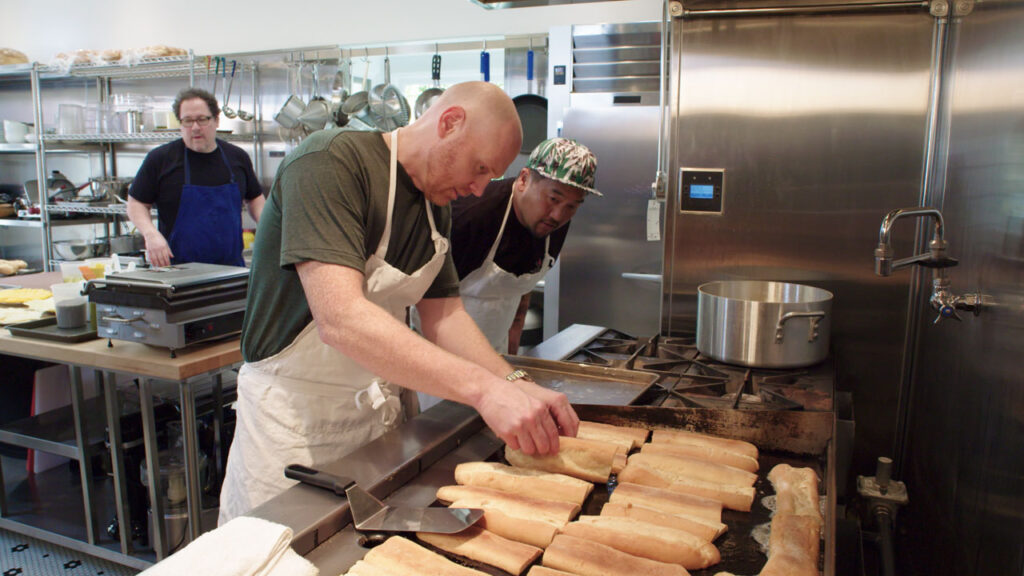
When Cuban immigrants moved to Florida in the late 19th and early 20th centuries, they brought their bread-making tradition with them. It quickly became popular in communities, particularly in Tampa and Miami, where it was embraced and adapted slightly to suit local tastes. This bread became an essential part of not just the Cuban sandwich but also a staple in many homes and celebrations. It’s all about the crispy crust and the soft, fluffy inside that makes it perfect for soaking up all those delicious sandwich juices without falling apart.
4 Core Components of a Cuban Sandwich
A classic Cuban sandwich is a harmony of flavors and textures, each component essential to creating its distinctive taste. Here are the four core components that make up a traditional Cuban sandwich:
- Cuban Bread – The foundation of any Cuban sandwich, Cuban bread is similar to a French baguette but slightly softer and fluffier inside with a thinner crust. It’s crucial for achieving the perfect press and crunch in the sandwich.
- Roast Pork – Slow-cooked, mojo-marinated roast pork is the star of the show. The pork is typically marinated in a mix of garlic, citrus juice (like orange and lime), and spices, giving it a juicy, flavorful profile that’s irresistibly Cuban.
- Ham – Sliced sweet ham adds a necessary layer of smoky, savory depth, contrasting beautifully with the rich, garlicky roast pork.
- Swiss Cheese, Pickles, and Mustard – Swiss cheese melts perfectly, enveloping the meats in creamy goodness. The pickles bring a tangy crunch that cuts through the richness, while the mustard (typically yellow mustard) adds a sharp, zesty kick to balance all the flavors.
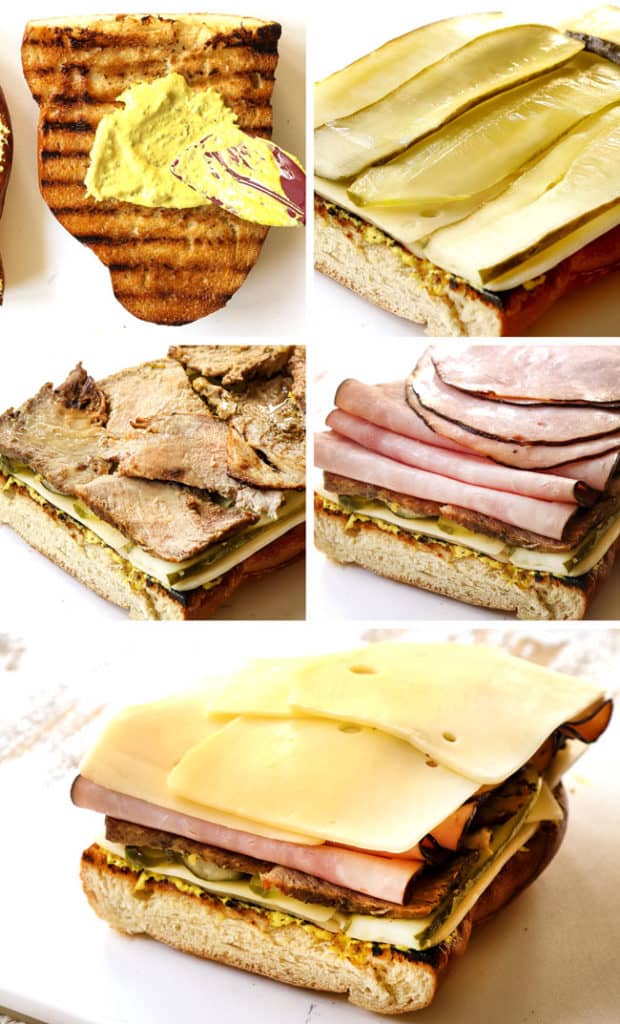
When these ingredients are stacked together and pressed in a plancha (a type of griddle), the Cuban sandwich reaches its peak — with the bread toasted to golden perfection and everything melded beautifully together.
What is the difference between a Cubano and a Cuban sandwich?
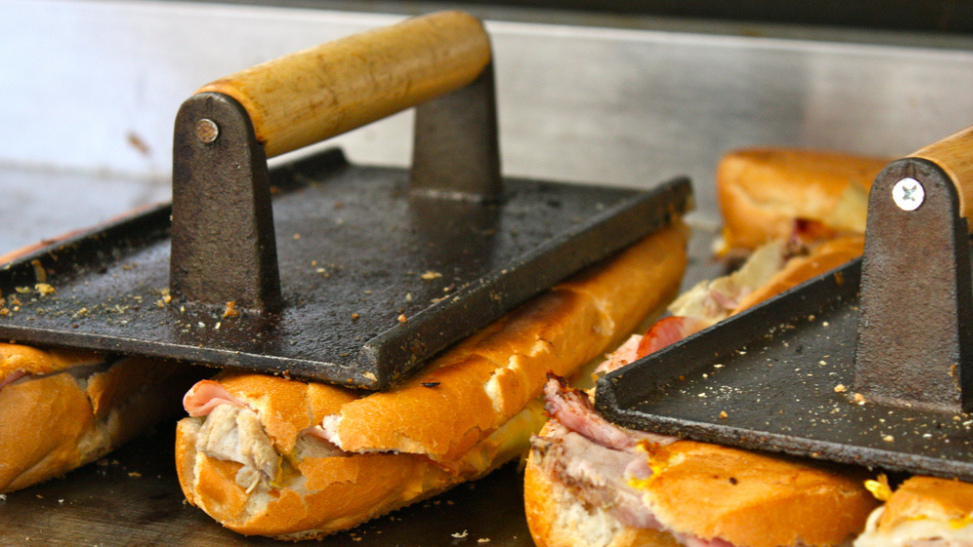
The terms “Cubano” and “Cuban sandwich” actually refer to the same delicious thing! “Cubano” is just a shorter, sometimes more casual term for the Cuban sandwich. Whether you call it a Cubano or a Cuban sandwich, you’re talking about the same iconic stack of ham, roasted pork, Swiss cheese, pickles, and mustard, all pressed together within that crusty, soft Cuban bread.
The only twist comes from regional variations like those between Tampa and Miami. In Tampa, they throw in some salami alongside the other fillings, thanks to the influence of Italian immigrants in the area.
Miami, however, sticks to the more traditional version. But whether it’s called a Cubano or a Cuban sandwich, the base recipe remains largely the same. It’s all about those key ingredients coming together to create something spectacularly tasty.
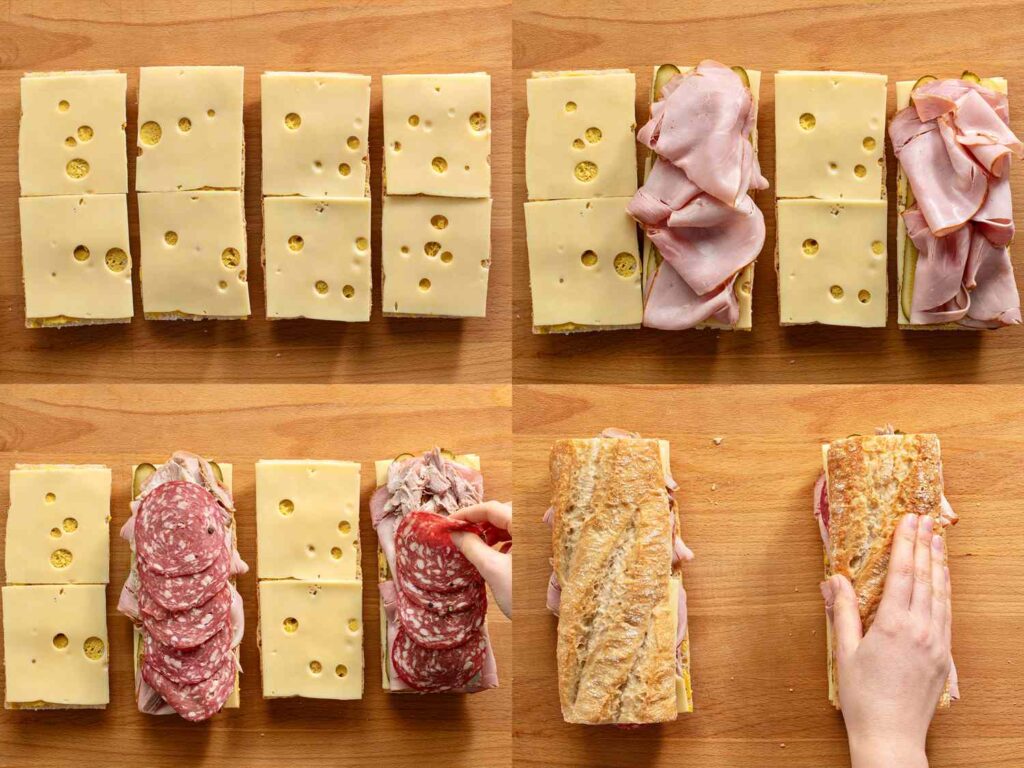
Conclusion
In conclusion, the Cuban sandwich, with its humble beginnings and rich cultural backstory, is much more than just a lunch option. It represents a fusion of Cuban, Spanish, Italian, and American flavors, testament to the immigrant influences that have shaped its history. From the essential Cuban bread to the marinated roast pork, sweet ham, melting Swiss cheese, tangy pickles, and bold mustard, each ingredient plays a crucial role in crafting the perfect Cubano.
Whether you’re enjoying it in the heart of Miami, the historic streets of Tampa, or somewhere across the globe, the Cuban sandwich offers a delicious taste of cultural harmony. It’s not just a sandwich; it’s a culinary journey, a piece of cultural heritage, and a flavorful embrace of diversity and history.
So next time you bite into a Cuban sandwich, remember, you’re experiencing a slice of Americana that continues to bring people together, one sandwich at a time.
